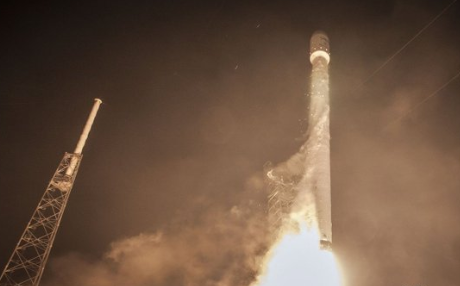You can’t win them all. Even Elon Musk has failures.
In an unexpected turn of events, SpaceX experienced its first rocket failure in nearly a decade, resulting in the doomed descent of its internet satellites. The Falcon 9 rocket, launched from California on Thursday night with 20 Starlink satellites onboard, encountered an upper stage engine malfunction just minutes into its flight. SpaceX later attributed the issue to a liquid oxygen leak.
Despite quick thinking from flight controllers who managed to contact half of the satellites, efforts to push them into a higher orbit using onboard ion thrusters fell short. The satellites’ lowest orbit, a mere 84 miles (135 kilometers) above Earth, left them with insufficient thrust to reach a stable altitude. Consequently, these satellites are expected to reenter the atmosphere and burn up, though the exact timing remains unclear.
SpaceX rocket accident leaves company’s Starlink satellites in wrong orbit. pic.twitter.com/KYj4NhtJv3
— Network Axis Group (@NetAxisGroup) July 13, 2024
This setback deals a significant blow to SpaceX’s Starlink project, which has been instrumental in providing internet service to some of the most remote corners of the world through its fleet of over 6,000 orbiting satellites. The Federal Aviation Administration (FAA) has now mandated that the malfunction be resolved before any further Falcon rocket launches can proceed.
The ripple effects of this incident on SpaceX’s upcoming crewed missions remain to be seen. Scheduled for July 31, a private spaceflight led by tech entrepreneur Jared Isaacman aims to conduct the first private spacewalk. This mission is followed by an astronaut flight to the International Space Station for NASA, planned for mid-August.
SpaceX rocket accident leaves Starlink satellites doomed! 🛰️ What will this mean for future launches? #SpaceX #Starlink #RocketFailure pic.twitter.com/B3grvty1s5
— YourDailyNews (@WhatsGoingOnAI) July 13, 2024
Isaacman expressed confidence in SpaceX’s Falcon 9 rocket, highlighting its “incredible track record” and robust emergency escape system. This incident marks the first significant failure since a space station cargo run mishap in 2015 and a ground-based rocket explosion in 2016.
Elon Musk, SpaceX’s CEO, emphasized that the company’s high launch frequency facilitates rapid problem identification and resolution, a strategy he believes will minimize future disruptions.
Key Points:
- Rocket Failure: SpaceX’s Falcon 9 rocket experienced its first failure in nearly a decade, leaving 20 Starlink satellites in a low orbit destined to burn up.
- Cause of Malfunction: An upper stage engine malfunction, attributed to a liquid oxygen leak, caused the failure.
- Satellite Impact: Despite attempts to boost them to a higher orbit, the satellites will reenter the atmosphere and burn up, with no specified timeline.
- FAA and Future Flights: The FAA requires the problem to be fixed before further Falcon rocket launches, and the impact on upcoming crew flights is uncertain.
- Previous Incidents: The last SpaceX launch failure occurred in 2015, with a ground explosion in 2016; the company’s high flight rate helps in identifying and correcting issues.
RM Tomi – Reprinted with permission of Whatfinger News

